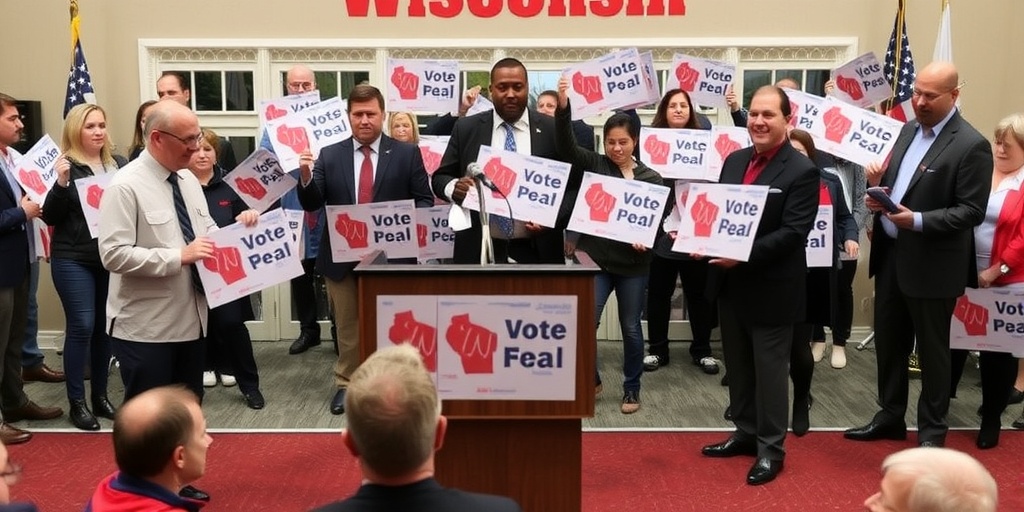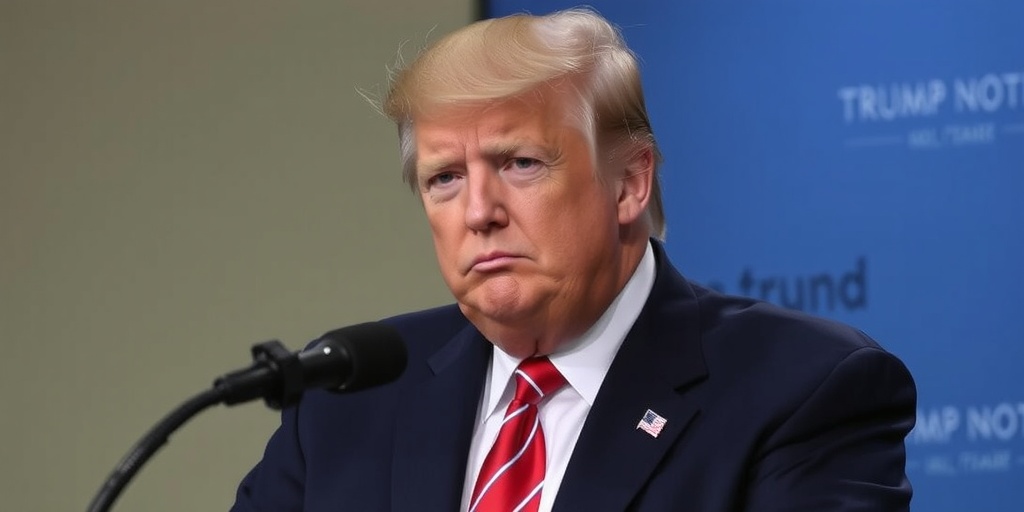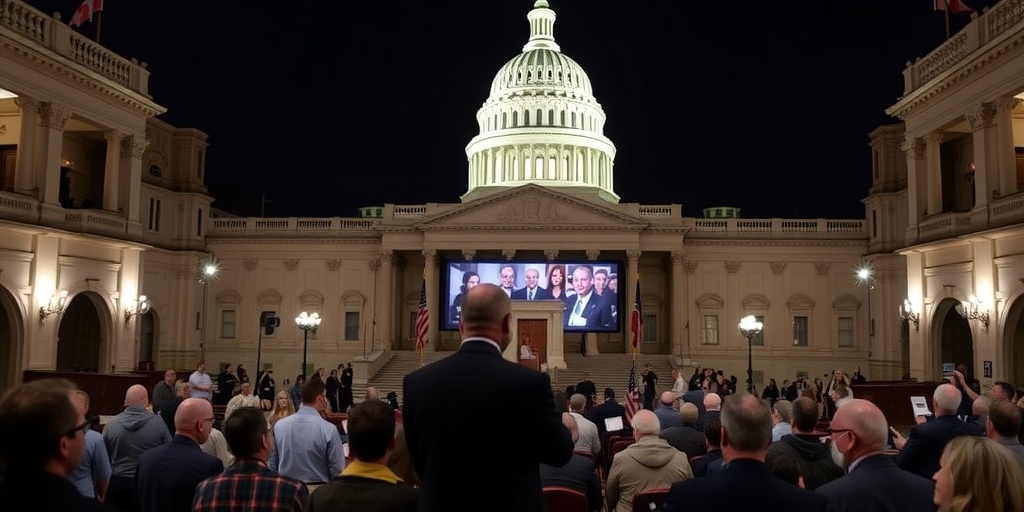Now Reading: Wisconsin Republicans Meet Vote Goal; Democrats Surge Past Theirs
-
01
Wisconsin Republicans Meet Vote Goal; Democrats Surge Past Theirs
Wisconsin Republicans Meet Vote Goal; Democrats Surge Past Theirs

In the recent Wisconsin Supreme Court election, conservative candidate Judge Brad Schimel aimed to secure over 60 percent of President Trump’s voter base to reclaim the court’s majority for Republicans. His campaign successfully attracted 62 percent of Trump’s November voting total from Wisconsinites. Notably, Schimel outperformed Justice Janet Protasiewicz, who had previously clinched an overwhelming victory by an 11-point margin during the 2023 election—an event that galvanized national attention for Democrats.
However, the election’s outcome presented a significant challenge for Republicans. Susan Crawford, the liberal candidate, managed to garner an impressive 78 percent of Vice President Kamala Harris’s vote total in Wisconsin, significantly exceeding the target that Schimel had set for himself. This performance starkly contrasted the GOP’s expectations and delivered a comprehensive victory for Crawford across the state.
Crawford’s dominance was evident across all 72 counties in Wisconsin, where her percentage of the Harris vote surpassed Schimel’s share of the Trump vote. This result marks a notable shift from the November elections, where Democrats believed they would mobilize adequate support for Harris but were overwhelmed by Trump’s turnout.
Crawford’s strongest support came from college towns and rural areas, where the Democratic Party’s organizational strength is particularly robust. These demographic groups formed a substantial part of her base, displaying an unexpected enthusiasm in an off-year election traditionally characterized by lower turnout rates. The mobilization strategy that Democrats have built over years yielded significant results, as Crawford’s campaign built on the groundwork laid by previous elections.
In the rural southwest corners of the state, also known as the Driftless Area, Crawford achieved between 83 and 88 percent of Harris’s overall turnout. In contrast, Schimel’s performance hovered just above or below 60 percent across the same counties. This striking disparity enabled Crawford to secure an additional 15 to 17 percentage points in her favor in various counties.
Republican tactics this election season relied heavily on leveraging the turnout from Trump supporters, rather than establishing a consistent grassroots campaign. In contrast, the Democratic strategy focused on cultivating a volunteer network that engaged rural voters and developed a deep-rooted organizational ethos.
Crawford’s sweeping margins in college towns further illustrated her campaign’s strength. In Dane County, home to Madison and the University of Wisconsin’s flagship campus, she achieved an outstanding 85 percent of Harris’s voting total, while only 61 percent of Trump voters in that region supported Schimel. Similar trends were observed in Eau Claire and La Crosse counties, where Crawford’s support exceeded expectations, demonstrating Schimel’s failure to tap into the younger and highly educated voter demographic.
In suburban regions such as Waukesha, Ozaukee, and Washington counties—areas historically strong for Republicans—Schimel did manage to secure 70 percent of Trump’s November totals. However, campaign insiders acknowledged that this focus on suburban strategies might have inadvertently neglected the rural voters who had previously supported Trump in larger numbers. This limitation underlined the challenges Republicans face in mobilizing support in off-year elections, where a thorough, long-term campaign strategy is essential.
Waukesha County, Schimel’s political stronghold, witnessed considerable campaign efforts, including remarkable canvassing operations led by figures associated with Elon Musk. Reports indicated that voters in this county received multiple visits from canvassers, encouraging them to support Schimel.
Despite these outreach efforts, the acknowledgment of the need for a broader, longer-term campaign to connect with rural voters stands out as a key takeaway from this election. While Musk’s involvement aimed to boost the Republican effort in the short term, the historical organization and infrastructure that Democrats have built over the years proved resilient, highlighting the crucial need for Republicans to reassess and strengthen their outreach strategies moving forward.
In summary, the Wisconsin Supreme Court election served as a pivotal reminder of the complex dynamics that continue to shape the state’s political landscape, especially in an environment increasingly influenced by grassroots organization, targeted voter engagement, and the contrasting strategies employed by Democrats and Republicans. The victory of Judge Crawford signals a significant moment for the Democratic Party, reinforcing their organizational capabilities while presenting a challenge to Republicans to recalibrate their efforts in future contests.
Stay Informed With the Latest & Most Important News
Previous Post
Next Post
-
 01New technology breakthrough has everyone talking right now
01New technology breakthrough has everyone talking right now -
 02Unbelievable life hack everyone needs to try today
02Unbelievable life hack everyone needs to try today -
 03Fascinating discovery found buried deep beneath the ocean
03Fascinating discovery found buried deep beneath the ocean -
 04Man invents genius device that solves everyday problems
04Man invents genius device that solves everyday problems -
 05Shocking discovery that changes what we know forever
05Shocking discovery that changes what we know forever -
 06Internet goes wild over celebrity’s unexpected fashion choice
06Internet goes wild over celebrity’s unexpected fashion choice -
 07Rare animal sighting stuns scientists and wildlife lovers
07Rare animal sighting stuns scientists and wildlife lovers





















